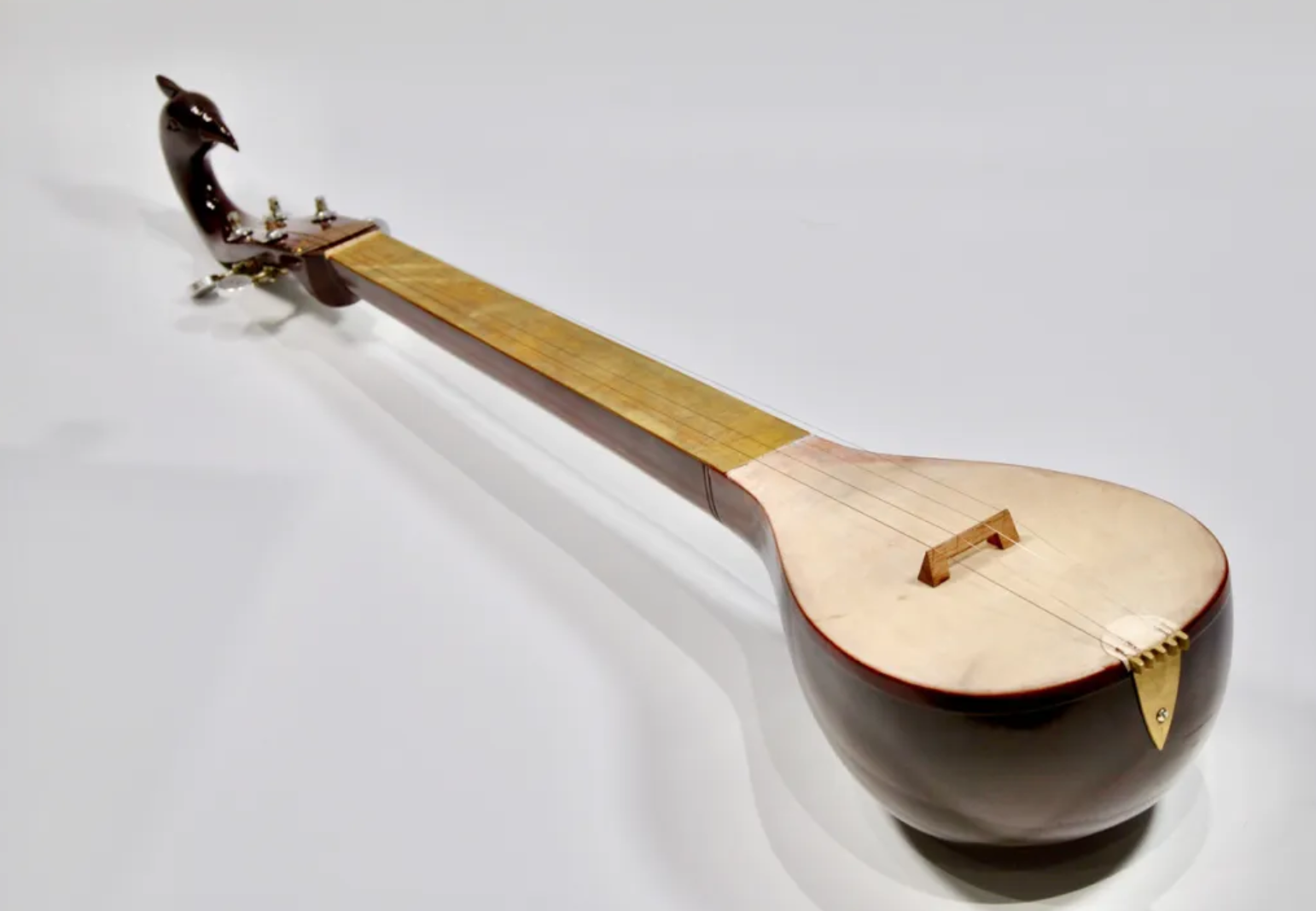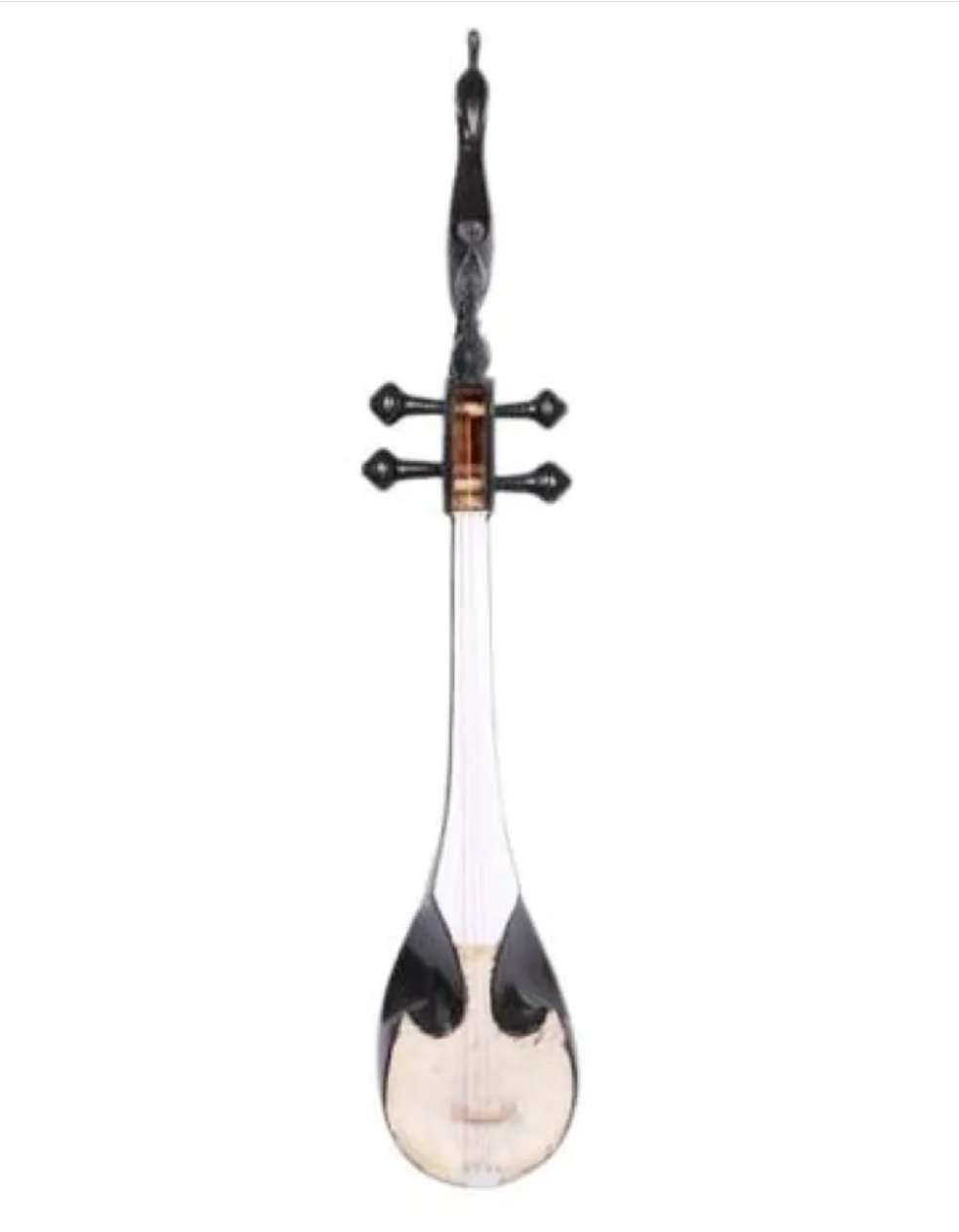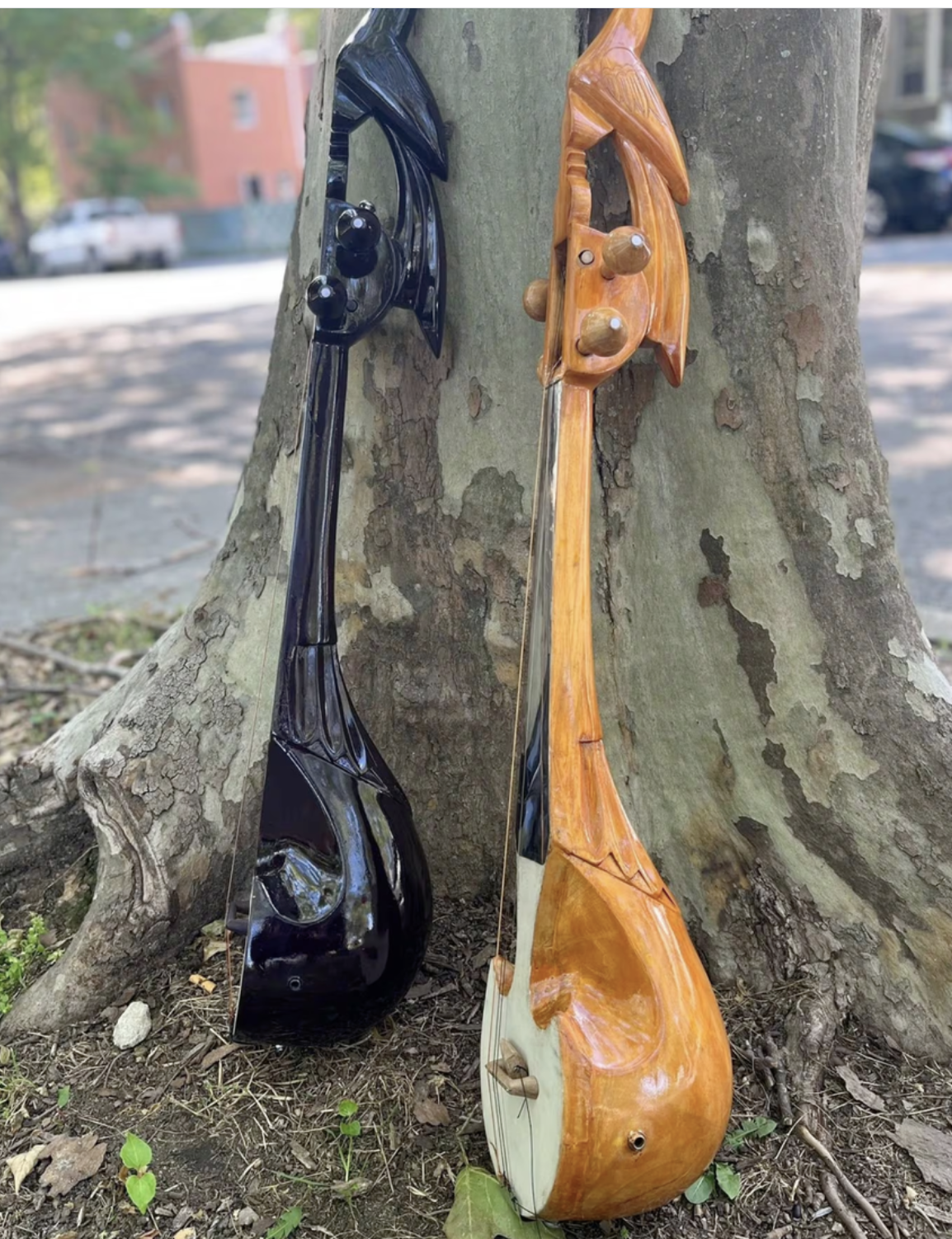Dotara: Popular Science of traditional Instruments of Ancient India and Songdio AI's music Creation Experience ".
The dotara (or dotar) (Assamese: দোতোৰা dûtûra, Bengali: দোতারা, Rangpuri: দোতোৰা dotora, literally, “Of [or ‘having’] two strings”) is a two-stringed, plucked musical instrument from South Asia, with most contemporary models having four playing strings (similar to the sarod).
Comparatively, the sarod is a slightly larger and more elaborate instrument, being built with an additional set of resonant sympathetic strings. However, the dotara is still quite resonant and projective of its own sound, due to its rounded shape and overall construction.

It is commonly played in Bangladesh (where it is known as the national instrument) and the Indian states of Assam, West Bengal and Bihar. It was mentioned in a 14th-century Saptakanda Ramayana. Later, it was adopted by the ascetic cults of Bauls and Fakirs.

The word is from Eastern Indo-Aryan (do târ), literally "two strings", or “double-stringed”, with the suffix “-a” indicating “having, -ed”. The instrument is known as dotara or dütara (Bengali: দোতারা, Assamese: দোতাৰা) and dütüra (Assamese: দোতোৰা). Additionally, it was believed to have been called dotara due to the strings being of equal pitch in tuning.
Madhava Kandali,
Madhava Kandali, 14th century Assamese poet and writer of Saptakanda Ramayana, lists several instruments in his version of "Ramayana", such as Dotara, mardala, tabal, jhajhar etc.

The dotara is one of the most important instruments used in various genres of folk music in Bengal and Assam. It has two main forms, the Bangla and the bhawaiya (Assamese form). The Bangla form originated in the Rahr Bangla region, where it is still predominantly played. It has metal strings, which give it a brighter tone than other instruments played in the area. Although a dotara can have 4-5 strings, most playing is done primarily on two strings, hence the name.

The bhawaiya form is almost extinct in contemporary times, that has a more primeval beginning[clarification needed] than its bangla cousin. Again the strings are its striking feature, being made either of thick cotton, silk or more popularly of catgut, giving it a more bass-rich tone. This instrument is widely used in eastern folk music forms such as the Bhhawaiya - of which the Goalpariya is a relatively well-known subcategory -the Kamrupi lokgeet- the Mahishali and the Baul forms prevailing in and around the Bengal Province, including areas in East Bihar.

The dotara is a plucked stringed instrument, played in an open note combination, often played alongside folk percussive instruments such as Dhol, Khhol or Mandira. It is made out of neem or other hardwood, with an elongated, roundish belly for a soundbox, which tapers to a narrow neck culminating in a peg box which is often elaborately carved in the shape of a peacock-head, swan-head or other animal motifs. The fingerboard is fretless and made of brass or steel, as in a sarod. The soundbox of the instrument is covered with a tightly stretched kidskin or lizard-skin, as in a rabaab or a sarod.
Key words: Dotara, ancient Indian instrument, traditional instrument, music creation, Songdio AI;Dotara instrument introduction, Dotara historical background, Dotara production method, Songdio AI music creation
Music creation experience combined with Songdio AI While making and playing Dotara, make use of Songdio AI to create some music and add some fun to your musical life. Songdio AI is a platform that generates music through artificial intelligence, with simplified steps that make it easy for users to create unique music. Users can edit, personalize their work, and generate copyright-free music for different projects and videos, as well as publish it across platforms and receive full royalty revenue.
With Songdio AI, users can:
Discover music: Discover popular music, latest music and random songs that everyone is listening to in Songdio-AI music player to meet users’ needs for different types of music. Create music: Create your own music with Songdio-AI music player, have fun creating music, and put your creative ideas into practice. Recently played: Songdio-AI music player can record the user’s recently played songs, making it easy for users to review their favorite music at any time. Private playlists: Users can create their favorite music playlists, categorize and bookmark according to different moods and scenes.